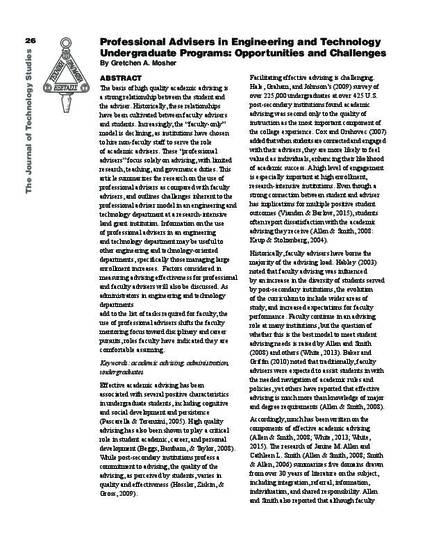
The basis of high quality academic advising is a strong relationship between the student and the adviser. Historically, these relationships have been cultivated between faculty advisers and students. Increasingly, the “faculty-only” model is declining, as institutions have chosen to hire non-faculty staff to serve the role of academic advisers. These “professional advisers” focus solely on advising, with limited research, teaching, and governance duties. This article summarizes the research on the use of professional advisers as compared with faculty advisers, and outlines challenges inherent to the professional adviser model in an engineering and technology department at a research-intensive land grant institution. Information on the use of professional advisers in an engineering and technology department may be useful to other engineering and technology-oriented departments, specifically those managing large enrollment increases. Factors considered in measuring advising effectiveness for professional and faculty advisers will also be discussed. As administrators in engineering and technology departments add to the list of tasks required for faculty, the use of professional advisers shifts the faculty mentoring focus toward disciplinary and career pursuits, roles faculty have indicated they are comfortable assuming.
Available at: http://works.bepress.com/gretchen_mosher/64/

This article is published as Mosher, Gretchen A. "Professional Advisers in Engineering and Technology Undergraduate Programs: Opportunities and Challenges." Journal of Technology Studies 43, no. 1 (2017): 26-34. Posted with permission.